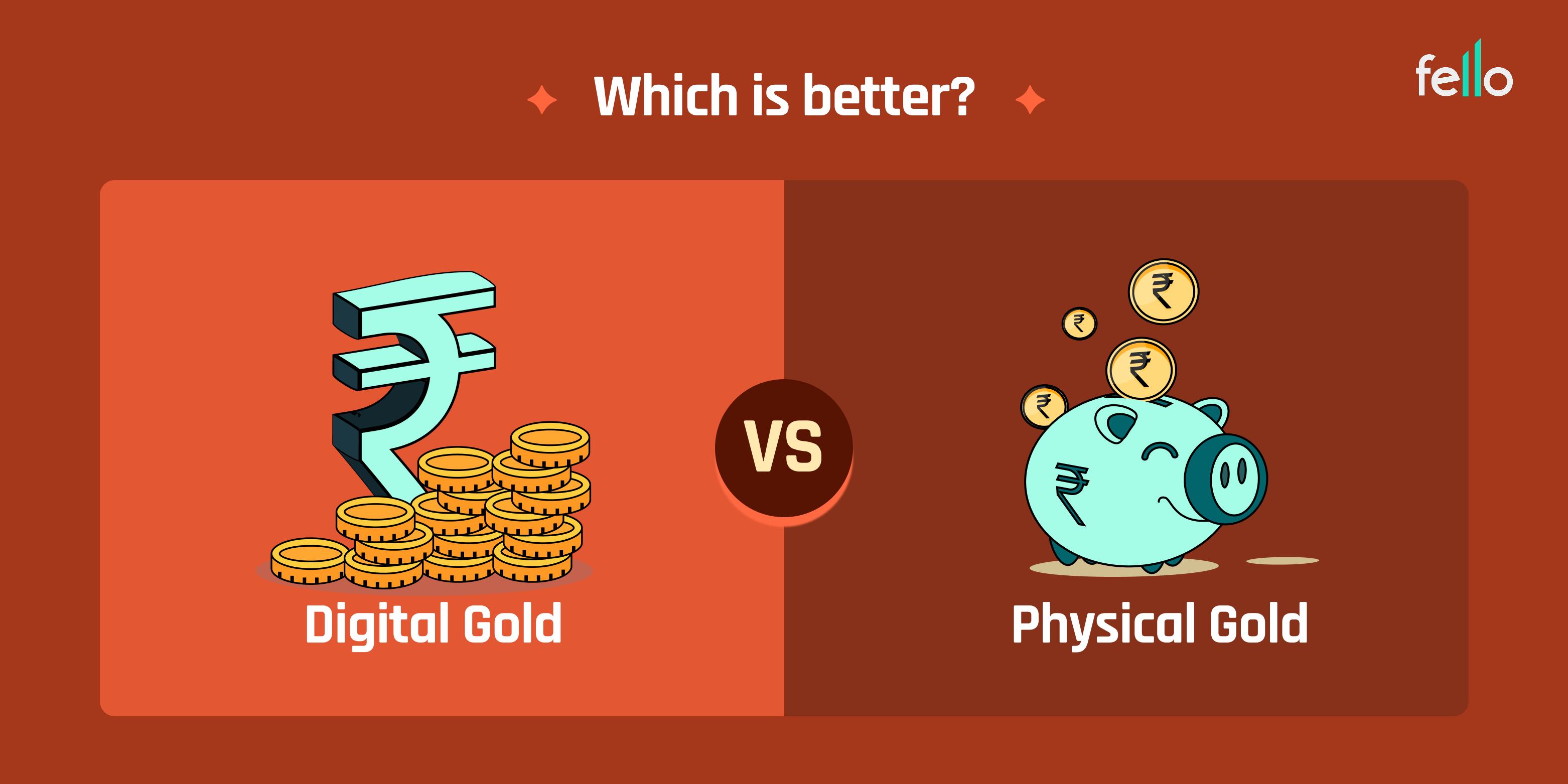Gold has been one of the most trusted forms of wealth for centuries. In India especially, it holds cultural as well as financial importance. But with technology reshaping how we invest, a new question often arises: Which is better, digital or physical gold? Understanding the pros and cons of both options can help investors make smarter choices.
Understanding Physical Gold
Physical gold refers to jewelry, coins, or bars that you can touch, hold, and store. For generations, it has been considered a safe investment and a symbol of prosperity.
Advantages of Physical Gold
- Tangible Asset: You can wear it, gift it, or store it as family wealth.
- Universal Acceptance: Accepted by jewelers and dealers worldwide.
- Cultural Value: Essential during weddings, festivals, and traditional ceremonies.
Disadvantages of Physical Gold
- Storage Hassle: Needs lockers or safe-keeping, which often comes at an extra cost.
- Purity Concerns: Risk of adulteration unless purchased from trusted sellers.
- Liquidity Issues: Selling involves making charges, deductions, or price negotiations.
- High Entry Cost: Buying coins or jewelry usually requires thousands of rupees upfront.
Understanding Digital Gold
Digital gold is a modern way to invest. You buy gold online, and it is stored in insured vaults by providers like MMTC-PAMP, SafeGold, or Augmont. You can invest in small amounts, even starting with just ₹10.
Advantages of Digital Gold
- Convenience: Buy and sell 24/7 using apps, wallets, or investment platforms.
- Low Entry Point: Start with as little as ₹10.
- Purity Assured: Always 24K, 99.9% pure gold.
- Flexibility: Easily convert to coins, bars, or jewelry later.
- Safe Storage: Insured vaults eliminate the risk of theft.
Disadvantages of Digital Gold
- Platform Dependency: Requires trust in the digital provider.
- Time Limit on Storage: Some platforms allow free storage for up to 5 years only.
- Regulation Gap: Unlike mutual funds or bank FDs, digital gold is not yet directly regulated by SEBI or RBI.
Digital Gold vs Physical Gold: A Comparison
Here’s a side-by-side look to understand Which gold is best, digital or physical?
| Factor | Physical Gold | Digital Gold |
|---|---|---|
| Accessibility | Offline purchase only, limited by jeweler stock | Available 24/7 online on multiple platforms |
| Purity | May vary, requires hallmarking | Always 24K, 99.9% pure |
| Minimum Investment | Usually ₹5,000+ | Starts as low as ₹10 |
| Storage | Locker required, risk of theft | Insured vaults, zero hassle |
| Liquidity | Selling involves cuts & deductions | Instant buy/sell at live market prices |
| Cultural Value | Strong – weddings, festivals, traditions | Weak – purely financial investment |
| Extra Costs | Making charges, premiums on coins/jewelry | No making charges, only nominal platform fee |
Which Gold is Best, Digital or Physical?
The answer depends on your goals:
- If you value tradition, gifting, or cultural use, physical gold still makes sense. A gold necklace at a wedding has emotional weight digital gold can’t replace.
- If your focus is investment and convenience, digital gold is clearly better. It’s liquid, transparent, and fits perfectly into today’s online ecosystem.
For example, if you invest ₹10,000 in physical gold jewelry, you may lose 8–10% upfront on making charges. On the other hand, ₹10,000 in digital gold is fully invested, grows with the market price, and can be sold anytime.
Globally too, investors are moving toward digital assets for flexibility and transparency. In India, young professionals are embracing digital gold because it blends tradition with technology — wealth creation without the storage hassle.
Final Thoughts
So, Which is better, digital or physical gold? Both have their place. Physical gold carries emotional and cultural value, while digital gold offers unmatched convenience, security, and accessibility. For long-term wealth creation and flexibility, digital gold is emerging as the smarter choice.

